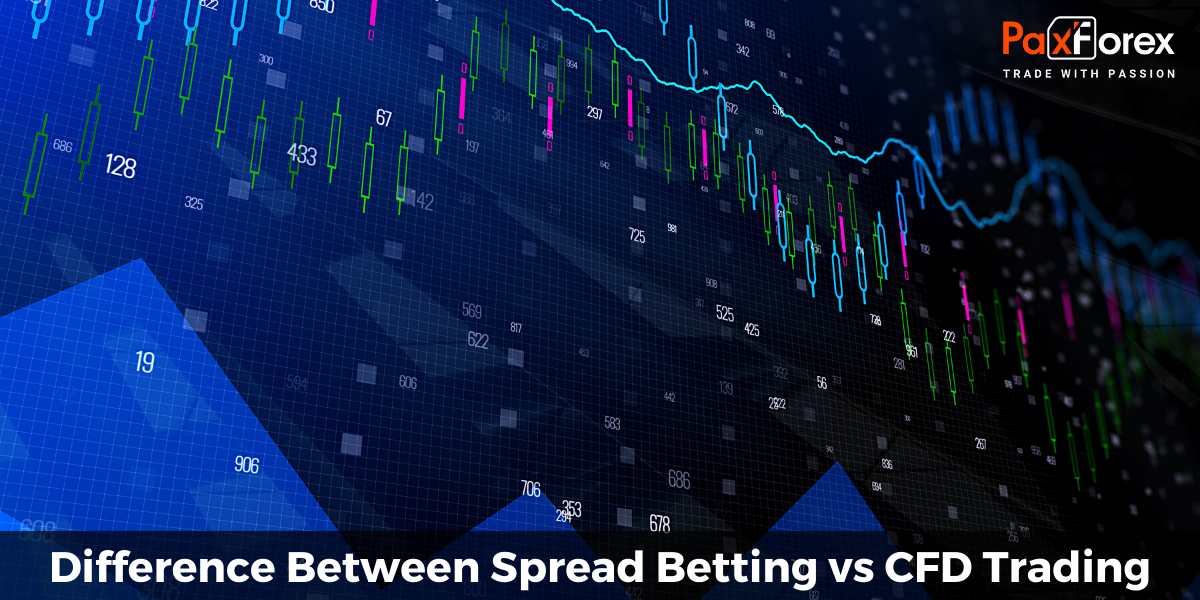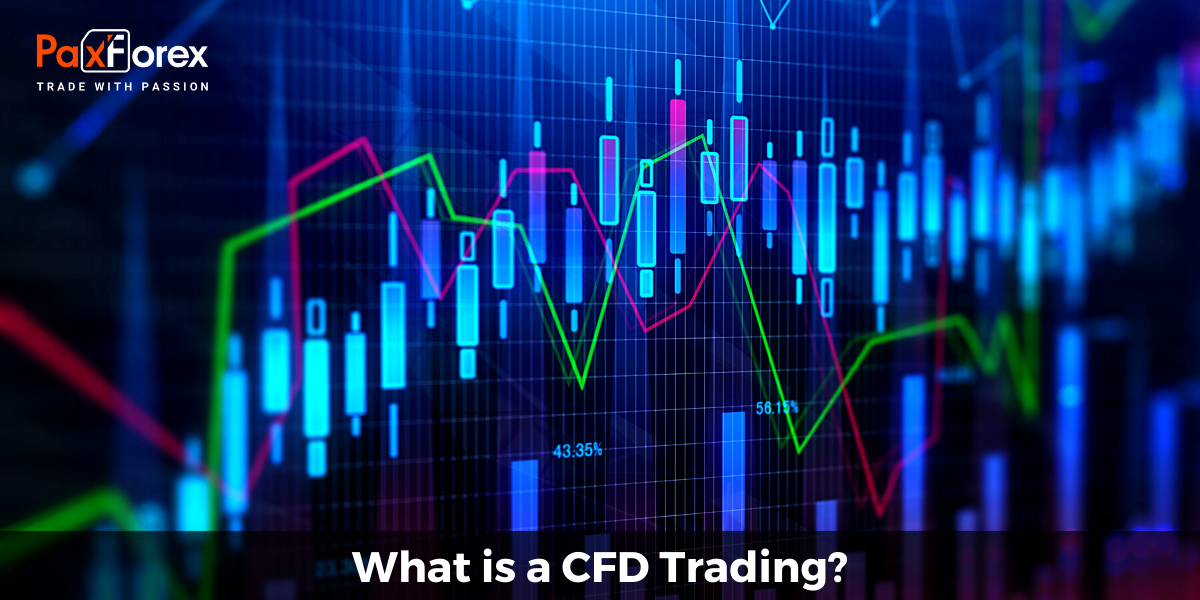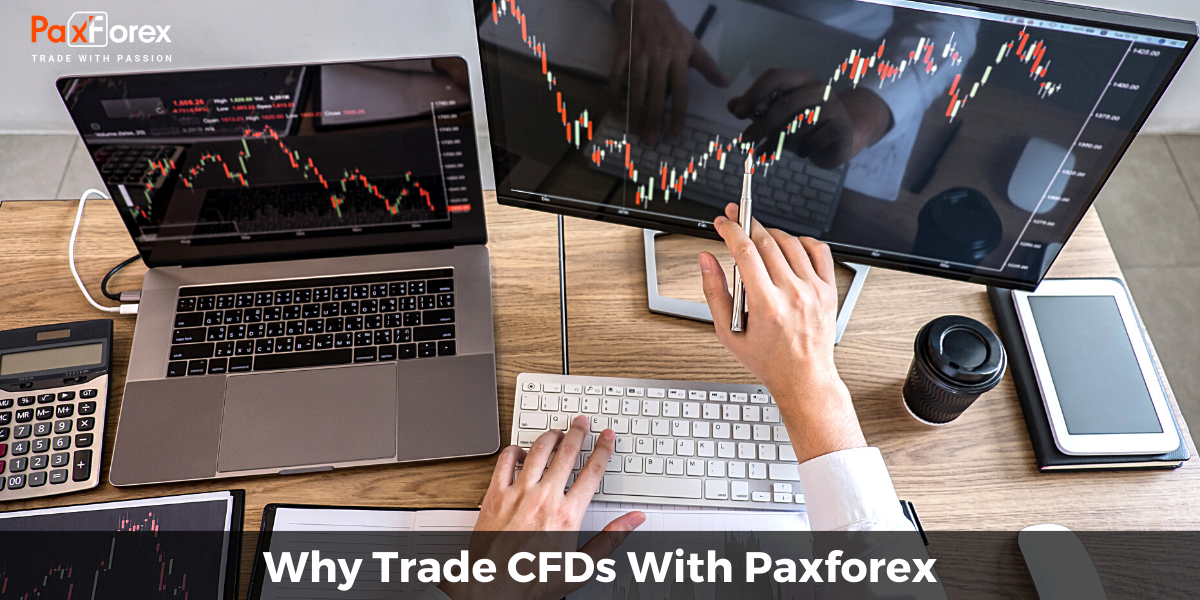
Today investing in financial markets can bring in huge returns. Nevertheless, only a few can locate the funds required to get sustainable profits. Fortunately, leveraged products allow investors to get notable market exposure with a humble starting deposit.
Spread betting and contracts for difference (CFDs) are leveraged-based derivative products for trading on thousands of different financial markets. They let traders speculate on an asset’s rate with no need to physically own the underlying instrument.
In this article, you will learn what is a CFD trading, what is betting spread and the difference between them. Also, you will discover what you need to take into account while choosing any of them for your trading plan.
Spread Betting vs CFDs
In many ways, spread betting and CFD trading are similar:
Leverage – Both are leveraged products, suggesting you can considerably boost your position size with a small deposit. You’ll often be able to place an order with just a 5% margin. Of course, spread betting and CFD trading costs differ depending on the brokerage company and/or underlined asset. Luckily, there is a margin calculator almost on every platform.
Market access – With both you can invest in thousands of markets, from shares to forex, cryptocurrencies, commodities, ETFs, futures, and options. Enthusiasts of both products can also get round-the-clock access to financial markets.
Derivatives – With both CFD trading and spread betting, traders do not physically hold the underlying asset.
Long & short – You can open long and short positions with both means.
Platforms – The best financial spread betting and CFD trading platforms are usable on desktop and mobile apps, and embrace popular systems, such as MetaTrader 4.
Demo accounts – Regardless of whether you decide to start CFD trading or spread betting, most brokers provide a demo account. A test account allows you to train the fundamentals in a risk-free environment prior to investing actual funds.
Education – There are abundant online means prepared for both spread betters and CFD traders. Look for videos and virtual classes for guidance with definitions and trading hints. Blogs and forums can also be an excellent method to observe specialists exchange opinions on how successful CFD trading and spread betting works.
Short-term vs long-term – Both instruments are fitting for day traders and short-term investors. They are, though, less efficient as long-term investment means.
Trading expenses – On most spread betting and CFD trading platforms there are holding fees.
What is Betting Spread?
Spread can be traded in the same way as a regular financial instrument, the only difference is that buying and selling a spread is not a one-act process, but a complex operation involving simultaneous execution of several trades with all assets included in the spread. Buying the spread is the simultaneous purchase of the first basket of instruments and the sale of the second basket, while selling is the opposite.
The main idea of spread trading is to combine the instruments to build a spread that meets certain criteria, the most important of which is the simplicity and stability of trading. Most often, traders try to choose a spread that would fluctuate within a certain range. If that can be done, then all further trading simply comes down to buying the spread when it reaches the lower boundary and selling when it reaches the upper boundary.
The easiest way to explain the essence of spread trading is to use the example of paired trading, a simpler variant of a strategy that operates only with a pair of instruments. This method of trading on the financial market is based on the correlation of market price movements of two different assets. This relationship is called correlation. It can be positive and negative. The level of positive correlation has financial instruments, the prices of which almost always move in one direction, and the negative correlation has assets, the price movement of which has the opposite direction. The higher the correlation index is, the more exactly the assets repeat the changes in each other's value.
For example, you can open price charts of popular currency pairs, EUR/USD, and GBP/USD. We can see that if EUR/USD quotes fall, then GBP/USD moves in the same direction, and vice versa. If you take the price charts of these assets and overlap each other, you can see that they are moving in a very similar direction, and the distance between these charts will be exactly the spread. It will also be possible to see that this distance changes with time, in other words, the spread expands and narrows. It is these changes that traders use in pair trading, developing, and applying almost risk-free trading strategies.
Spread trading and its varieties have both advantages and disadvantages. For example, using this way of working in the market, a trader does not need to perform complex technical and fundamental analysis, based on which most market participants make forecasts. Being in a market-neutral position, a trader is protected from sharp price fluctuations, as open orders hedge each other.
However, despite these advantages, it is possible to make a loss as if using any other trading system. The strategy implies the opening of two orders at the moment when the price lines of two assets converge. But since the market is unpredictable, there are situations when the expected movement does not occur and quotes continue to diverge. In this case, both orders will cause a loss, increasing the drawdown.
Knowing what is betting spread and mastering that will help you boost your trading results. To succeed in spread betting, you need to learn how to use correlated pairs correctly and to follow simple recommendations on money management. If a trader learns how to accurately determine the maximum level of divergence of quotes, does not overload the deposit with high volume, and closes positions in time, his success is guaranteed.
What is a CFD trading?

Let`s start with the fundamentals - what is a CFD trading. According to classical economic theory, a contract for difference is a two-way contract in which the seller must pay the buyer the price difference between the opening and closing price of the order. And we are talking only about money, that is, without the right to demand delivery of the traded asset.
For a person who is far from trading, this wording means nothing. Therefore, let us analyze the specific situation. For example, you think that the oil market will grow in the long term. In this case, you open a CFD contract and pay the seller the actual value of the asset at the time of opening the order.
Then you wait until the time specified in the contract is over. If your assumptions are correct and the price of the asset actually soars, the seller will pay you the difference. To make it clearer, let's look at the same example in numbers.
Let's say you bought oil at $46 a barrel for a period of 2 months. At the end of the contract, the price went up to $58 per barrel. Accordingly, the seller will pay you the difference 58-46=$12 for each barrel you bought. If the forecast does not materialize, the buyer will be required to make an additional payment to the seller using the formula described above.
In practice, possible losses from CFDs are always lower than expected profits. Therefore, this option of trading is very popular.
The price of a CFD is the price of a share, index, or futures contract, which increases accordingly the price of the CFD. A significant feature is that there is no exchange fee in CFD trading, and there are no other disadvantages that occur in securities trading. CFD contracts provide an opportunity to use leverage.
Once you`ve learned what is a CFD trading, you may be wondering how to trade properly. To successfully trade CFDs, the main condition is the use of leverage to increase equity, and you also need a margin. Opening a trading account provides access to oil products, indices, precious metals, and multiple currency pairs. Having gained profit from a trade, it can be immediately beneficially used by opening new orders, which allow the trader to increase his capital. Besides, for a participant in exchange trading, there is a possibility of distribution of all investments into different markets.
The main advantage of CFDs is a wide range of tools. In fact, a trader is not bound to a specific asset and its price fluctuations. You can open orders for different types of financial instruments, which allows you to make constant profits.
The second advantage is a good spread. Often the CFD income is up to 40% of the deposit. And you fix the profit at once. Therefore, it makes sense to invest large amounts.
When trading CFDs, you can use any sentiment in the market. If you predict that the price of an asset will go down, just open a CFD to go down. Accordingly, you are not bound to volatility in any way.
As CFDs are derivatives, you do not have any commodity obligations. All profits are recorded instantly when the contract is executed.
The Difference Between Spread Betting and CFD Trading
The principal distinction between spread betting and CFD trading is the way they are taxed. Even though earnings from CFD trading are bound up with taxation, spread betting is a tax-free product immune from capital gains tax (CGT).
Furthermore, spread betting is possible solely in the United Kingdom and Ireland, despite the fact that CFDs are available for traders from around the world, anywhere allowed.
So, spread betting or CFD trading? Both models of derivatives trading allow you to go short or long, though there are some technical distinctions in the way they are used.
Unlike spread betting, where all your trades are executed in the currency of the account, with CFD trading you operate in the currency of the underlying instrument, which is then converted into your account currency if needed. That suggests that CFD trading is exposed to exchange rate changes as well as price fluctuations in your chosen market.
Spread betting, has determined expiration dates when the bet is placed while CFDs have none. Moreover, spread betting is performed over the counter (OTC) via a broker, and CFD positions can be executed directly within the market. Direct market access bypasses some market traps by providing clearness and simplicity of performing electronic trades.
Spread Betting vs CFD Trading Platforms
By now, spread betting can be traded exclusively on the specially designed platforms that are provided by the brokerage companies with betting spread option. CFD, on the other hand, is traded on the most popular and widely used platform MetaTrader 4 which makes it much more accessible since almost every broker works with this terminal.
MetaTrader gives you a smooth and convenient trading experience. Among the main advantages are:
Compared to analogs offered by other developers, it boasts a more user-friendly interface.
It has excellent functionality, which allows you to trade comfortably and efficiently, as well as to perform technical analysis. A trader can use indicators, quotes, graphical tools, three types of charts, as well as the news feed, which is regularly updated.
With its help, you can use nine time periods of charting, open as many windows as you need, as well as test EAs.
If you have your own strategy, you can create an EA or new indicators based on it. This is possible due to the fact that the MQL programming language is built into the platform.
All your operations are confidential, because a 128-bit encryption system is used, which is based on a special algorithm and electronic signature.
You will always be aware of all quotes at the moment. Your operations will be saved in an archive and you can view them at any time.
The big benefit is that the platform is free, there are no restrictions on its use.
Choosing between CFD or Spread Betting
When it comes to deciding which way of trading to select, CFD, or spread betting, you need to take a full account of some crucial aspects. No doubt, the tax situation will be a decisive difference to pick between for some traders, but still, other factors could have a more significant influence on your profits at the end of the day.
For instance, both spread betting and CFD trading can be traded on the same markets (Forex, Stocks, Indices, Commodities, and Cryptocurrencies). Nevertheless, CFD traders may have the opportunity to trade directly with the broker's liquidity providers (usually tier-one banks or hedge funds) through ECN (Electronic Communication Network) or STP (Straight Through Processing) technology. That lets traders get institutional-grade spreads and lower spreads indicate lower expenses, which could end in greater returns.
As spread betting means betting on the prospect of rates either rising or falling, it cannot give the option to trade with banks or hedge funds and get institutional-grade spreads. While CFDs suggest trading the underlying market value through contracts, investors may access the capacity to trade directly with banks and hedge funds to get tighter spreads and lightning-fast order execution.
CFD trading more exactly reproduces physical trading, and some traders believe it gives them more control. You can also pick CFDs if you are eager to compensate losses upon future gains for tax purposes, or you want to apply hedging strategies.
Both products provide you fast and easy access to a broad variety of global markets and leveraged trading, and both can be proper for short- and long-term investors.
Why trade CFDs with PaxForex

For 10 years, PaxForex has confirmed itself as a reliable online broker, with hundreds of thousand satisfied clients. From low costs and flexible funding to selecting an account type that suits your needs, trading with PaxForex gives you the freedom to get the most of each and every market opportunity.
We are committed to delivering superior services in currency trading, along with CFDs, precious metals, and cryptocurrencies.
Trading with PaxForex you get access to:
250+ instruments available containing Forex, cryptocurrencies, stocks, and commodities trading
Desktop, tablet, and smartphone trading with MetaTrader 4
Competitive Spreads
Client funds are kept in segregated accounts
Implementing trading on margin (up to 500:1 leverage), PaxForex delivers you access to financial markets through CFDs.
Daily trading signals and fundamental analysis.
Conclusion
Even though there are similar principles that are extremely obvious, the intricate distinction between CFDs and spread betting is not that easy to notice, especially for those new to trading and financial markets. Spread betting, as opposed to CFDs, is free of charge, and there is no need to pay capital gains tax out of the earnings. On the contrary, whatever CFD losses you may occur, they are subject to taxes, and your trading is executed directly to the market. One way or another, either CFDs or spread betting entails some degree of risk to lose the capital and making final decisions which of them to choose is up to a trader. Consider all pros and cons and choose wisely.







